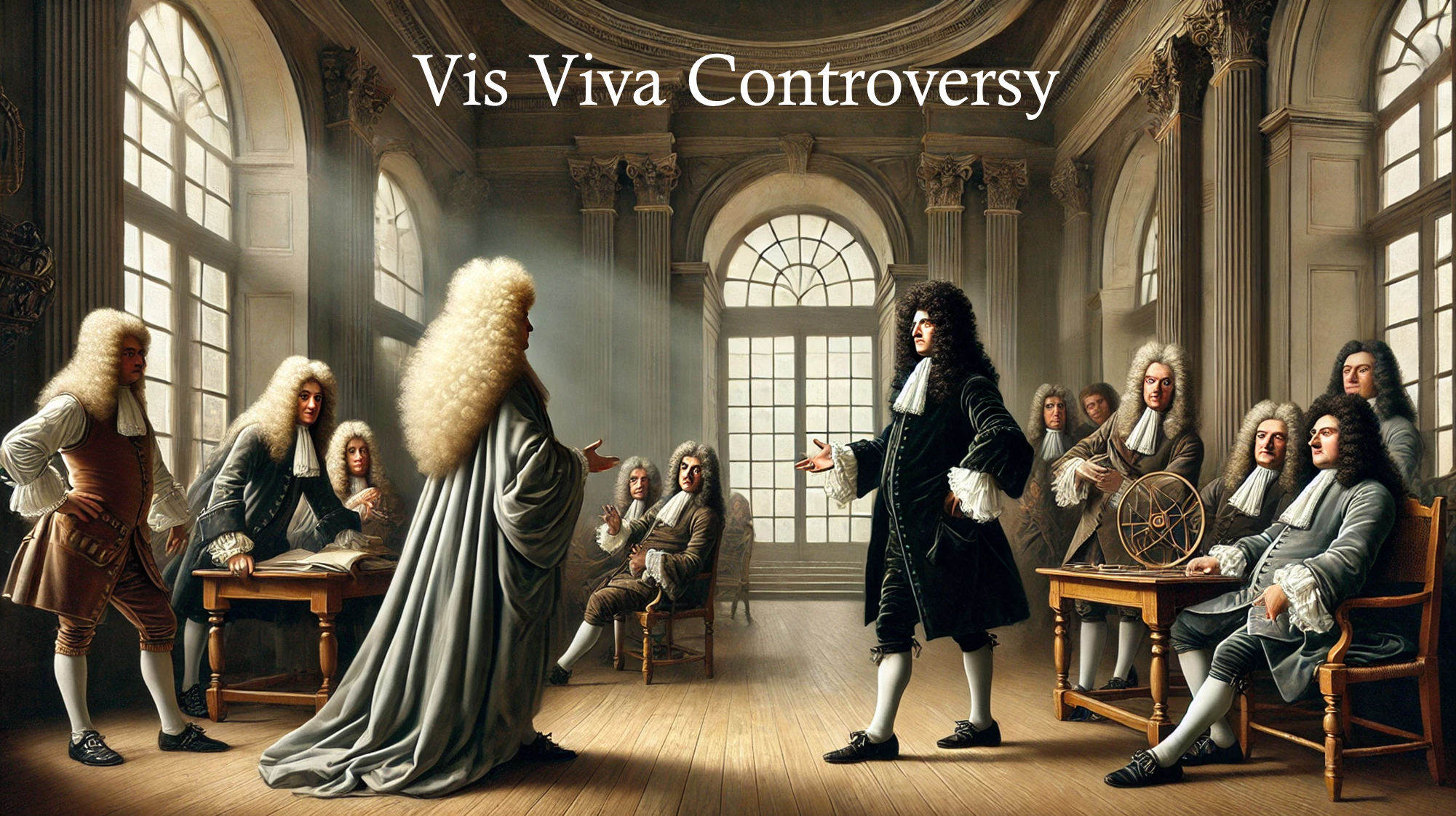1. Introduction

Does Energy Really Exist?
Does energy really exist? You may now find yourself wondering, but there is no need to rush for an answer. Even the early concepts of energy were the subject of heated controversy among European scientists and philosophers. Let's delve into the historical root of this question and explore one of the first seminal debates surrounding the concept of energy.
The Vis Viva Controversy
The Vis Viva Controversy, spanning the 17th and 18th centuries, is recognized today as a seminal yet curious debate that occupied the attention of scientists and philosophers across Europe. Often portrayed as a dispute between two schools of thought
Today, force
The Cartesian-Newtonian Perspective: Momentum as a Measure of Motion
The Cartesian-Newtonian perspective was rooted in the ideas of René Descartes and later elaborated by Isaac Newton. Descartes initially described “quantity of motion” as the product of an object's mass and speed. This idea was then refined by Christiaan Huygens as a product of mass
The Leibnizian Perspective: Vis Viva as a Measure of Intrinsic Ability
In 1686, Gottfried Wilhelm Leibniz criticized Descartes's ideas in his paper "Brevis demonstratio erroris memorabilis Cartesii et aliorum circa legem naturalem" ("Brief Demonstration of the Notable Error of Descartes and Others Regarding the Natural Law")[@Britannica]. In contrast to Descartes's mechanistic view, where external causality imparts motion to objects, Leibniz sought a foundational principle of force that was intrinsic to a moving body. He proposed that the "force" of a moving body should be measured by
Two Measures, Both Valid, Though...
In short, Cartesian-Newtonian school argued that momentum
The dispute intensified as prominent natural scientists and philosophers joined the debate, including Roger Boscovich, Willem 'sGravesande, and Jean le Rond d'Alembert [@Hankins1965]. Émilie du Châtelet, a follower of Leibniz, is famously known for her translation of Newton’s Principia into French. She contributed significant insights to the debate [@Musielak2023][@Hagengruber2012].
A “Dispute of Words” or Something More Profound?
By the 1740s, the intensity of the debate began to wane. Ernst Mach in [@Mach1893] attributes the end of this controversy to d'Alembert, who famously referred to this debate as a “dispute de mots" (a "dispute of words" in French). D'Alembert argued that the “force of motion” varies according to context. For example, if a body is thrown upward with twice the velocity
Using the formula for force,
indicating that the force is indeed a time derivative of momentum
On the other hand, by multiplying an small displacement
Thus,
Now, the force is found as a distance derivative of kinetic energy
This may seem to settle the debate as a mere semantic disagreement over the same thing. However, modern historians argue otherwise. Many contended that it is hard to believe that intellectual giants like Descartes, Leibniz, and Newton would debate for over 50 years on a simple disagreement in terminology.
Another Dimension: Conservation in the Universe
As Hankins [@Hankins1965] suggested, the dispute involved another fundamental question: “If there exists a quantity that remains conserved in the universe, what is it?” This deeper inquiry reflects differing views on the nature of the universe. Behind each measure
Momentum and energy are both generally conserved, meaning they remain constant unless acted upon by external influences. However, momentum was more easily accepted because it is directional and directly observable. In fact, after Huygens clarified that momentum is a vector quantity, its conservation was widely accepted by both sides of the debate. Vis viva (or energy), by contrast, was more complex. Although conserved in ideal cases, such as perfectly elastic collisions, conservation of energy is not obvious as it can transform into other forms, making its conservation more abstract and difficult to define.
In modern physics, momentum is often viewed as a more tangible quantity, while energy remains more abstract. The total momentum of the universe is widely believed to be conserved, while energy conservation is more complex and abstract, especially in the context of general relativity. So, what does energy really mean?
Summary and Introduction to the Remainder of the Article
Is energy real? Does it truly describe the universe, or it is merely a mathematical construct derived from something more fundamental? Answering this question requires a deep exploration across diverse domains of physics
Planned Table of Contents
- Introduction
- Descartes's View of the Universe
- Leibniz's Metaphysical Framework
- Revisiting Newtonian Mechanics
- The Law of Conservation of Momentum
- Linear momentum
- Angular momentum
- The law of conservation of mechanical energy
- Kinetic energy
- Potential energy
- Conclusions